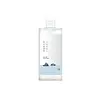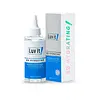What's inside
What's inside
 Key Ingredients
Key Ingredients

 Benefits
Benefits

 Concerns
Concerns

No concerns
 Ingredients Side-by-side
Ingredients Side-by-side

Water
Skin ConditioningDipropylene Glycol
HumectantGlycerin
HumectantPolyglyceryl-4 Caprate
Emulsifying1,2-Hexanediol
Skin ConditioningSea Water
HumectantHyaluronic Acid
HumectantHydrolyzed Hyaluronic Acid
HumectantSodium Hyaluronate
HumectantPanthenol
Skin ConditioningAllantoin
Skin ConditioningCeramide NP
Skin ConditioningPentylene Glycol
Skin ConditioningC12-14 Pareth-12
EmulsifyingCaprylyl Glycol
EmollientEthylhexylglycerin
Skin ConditioningButylene Glycol
HumectantTocopherol
AntioxidantDisodium EDTA
Water, Dipropylene Glycol, Glycerin, Polyglyceryl-4 Caprate, 1,2-Hexanediol, Sea Water, Hyaluronic Acid, Hydrolyzed Hyaluronic Acid, Sodium Hyaluronate, Panthenol, Allantoin, Ceramide NP, Pentylene Glycol, C12-14 Pareth-12, Caprylyl Glycol, Ethylhexylglycerin, Butylene Glycol, Tocopherol, Disodium EDTA
Water
Skin ConditioningChondrus Crispus Extract
Skin ConditioningUrea
BufferingPropylene Glycol
HumectantHyaluronic Acid
HumectantSodium Hyaluronate
HumectantGlycine
BufferingHydrolyzed Sodium Hyaluronate
Skin ConditioningAspartic Acid
MaskingSodium Acetylated Hyaluronate
HumectantPotassium Hyaluronate
Skin ConditioningLysine
Skin ConditioningSodium Hyaluronate Crosspolymer
HumectantValine
MaskingTyrosine
MaskingSerine
MaskingPhenylalanine
MaskingThreonine
Glutamic Acid
HumectantAlanine
MaskingProline
Skin ConditioningLeucine
Skin ConditioningHydrolyzed Hyaluronic Acid
HumectantHydroxypropyltrimonium Hyaluronate
Arginine
MaskingHistidine
HumectantIsoleucine
Skin ConditioningPhenoxyethanol
PreservativeEthylhexylglycerin
Skin ConditioningAllantoin
Skin ConditioningGlucose
HumectantXanthan Gum
EmulsifyingCaprylyl Glycol
EmollientButylene Glycol
Humectant1,2-Hexanediol
Skin ConditioningCitric Acid
BufferingEDTA
Water, Chondrus Crispus Extract, Urea, Propylene Glycol, Hyaluronic Acid, Sodium Hyaluronate, Glycine, Hydrolyzed Sodium Hyaluronate, Aspartic Acid, Sodium Acetylated Hyaluronate, Potassium Hyaluronate, Lysine, Sodium Hyaluronate Crosspolymer, Valine, Tyrosine, Serine, Phenylalanine, Threonine, Glutamic Acid, Alanine, Proline, Leucine, Hydrolyzed Hyaluronic Acid, Hydroxypropyltrimonium Hyaluronate, Arginine, Histidine, Isoleucine, Phenoxyethanol, Ethylhexylglycerin, Allantoin, Glucose, Xanthan Gum, Caprylyl Glycol, Butylene Glycol, 1,2-Hexanediol, Citric Acid, EDTA
 Reviews
Reviews

Ingredients Explained
These ingredients are found in both products.
Ingredients higher up in an ingredient list are typically present in a larger amount.
1,2-Hexanediol is a synthetic liquid and another multi-functional powerhouse.
It is a:
- Humectant, drawing moisture into the skin
- Emollient, helping to soften skin
- Solvent, dispersing and stabilizing formulas
- Preservative booster, enhancing the antimicrobial activity of other preservatives
Allantoin is a soothing ingredient known for its protective and moisturizingg properties. Because of this, it is often added to products with strong active ingredients.
Studies show higher concentrations of this ingredient can promote wound healing.
Though it can be derived from the comfrey plant, allantoin is produced synthetically for cosmetic products to ensure purity.
Learn more about AllantoinButylene Glycol (or BG) is used within cosmetic products for a few different reasons:
Overall, Butylene Glycol is a safe and well-rounded ingredient that works well with other ingredients.
Though this ingredient works well with most skin types, some people with sensitive skin may experience a reaction such as allergic rashes, closed comedones, or itchiness.
Learn more about Butylene GlycolCaprylyl Glycol is a humectant and emollient, meaning it attracts and preserves moisture.
It is a common ingredient in many products, especially those designed to hydrate skin. The primary benefits are retaining moisture, skin softening, and promoting a healthy skin barrier.
Though Caprylyl Glycol is an alcohol derived from fatty acids, it is not the kind that can dry out skin.
This ingredient is also used as a preservative to extend the life of products. It has slight antimicrobial properties.
Learn more about Caprylyl GlycolEthylhexylglycerin (we can't pronounce this either) is commonly used as a preservative and skin softener. It is derived from glyceryl.
You might see Ethylhexylglycerin often paired with other preservatives such as phenoxyethanol. Ethylhexylglycerin has been found to increase the effectiveness of these other preservatives.
Hyaluronic acid is naturally found in healthy skin. It is a humectant, meaning it draws moisture to your skin.
This ingredient helps hydrate, soothe, and protect the skin.
What makes hyaluronic acid so hydrating? It has the capacity to bind or hold large amounts of water.
Fun fact: It is already naturally found in our bodies, such as the fluids of our eyes and our joints.
Studies find this ingredient to have anti-inflammatory and anti-microbial properties. This can help speed up wound-healing.
Hyaluronic acid can be irritating if the molecule has a low-molecular weight, or if the molecules are small.
One study found low-molecular weight hyaluronic acid to be pro-inflammatory, meaning some people may experience irritation. This is because our bodies use hyaluronic acid in the wound-healing process to signal to our bodies, via irritation, that something needs healing.
The same study found high-molecular weight hyaluronic acid to be anti-inflammatory.
These are some other common types of Hyaluronic Acid:
Learn more about Hyaluronic AcidHydrolyzed Hyaluronic Acid is a form of hyaluronic acid. It is created by the hydrolysis of hyaluronic acid with a high molecular weight. Once created, Hydrolyzed Hyaluronic Acid has a low molecular weight.
Low molecular weight HA has been shown to hydrate and increase elasticity of the skin. Increasing elasticity is also associated with reduction of wrinkle depth.
One study found topical low molecular weight hyaluronic acid may be considered for the treatment of rosacea in the adult population. However, we always recommend speaking with a professional about your skin concerns.
Hyaluronic acids are a humectant. This means they draw moisture from the air. Hyaluronic acids help moisturize, soothe, and protect the skin.
Read more about other common forms of hyaluronic acid:
Learn more about Hydrolyzed Hyaluronic AcidSodium Hyaluronate is hyaluronic acid's salt form. It is commonly derived from the sodium salt of hyaluronic acid.
Like hyaluronic acid, it is great at holding water and acts as a humectant. This makes it a great skin hydrating ingredient.
Sodium Hyaluronate is naturally occurring in our bodies and is mostly found in eye fluid and joints.
These are some other common types of Hyaluronic Acid:
Learn more about Sodium HyaluronateWater. It's the most common cosmetic ingredient of all. You'll usually see it at the top of ingredient lists, meaning that it makes up the largest part of the product.
So why is it so popular? Water most often acts as a solvent - this means that it helps dissolve other ingredients into the formulation.
You'll also recognize water as that liquid we all need to stay alive. If you see this, drink a glass of water. Stay hydrated!
Learn more about Water